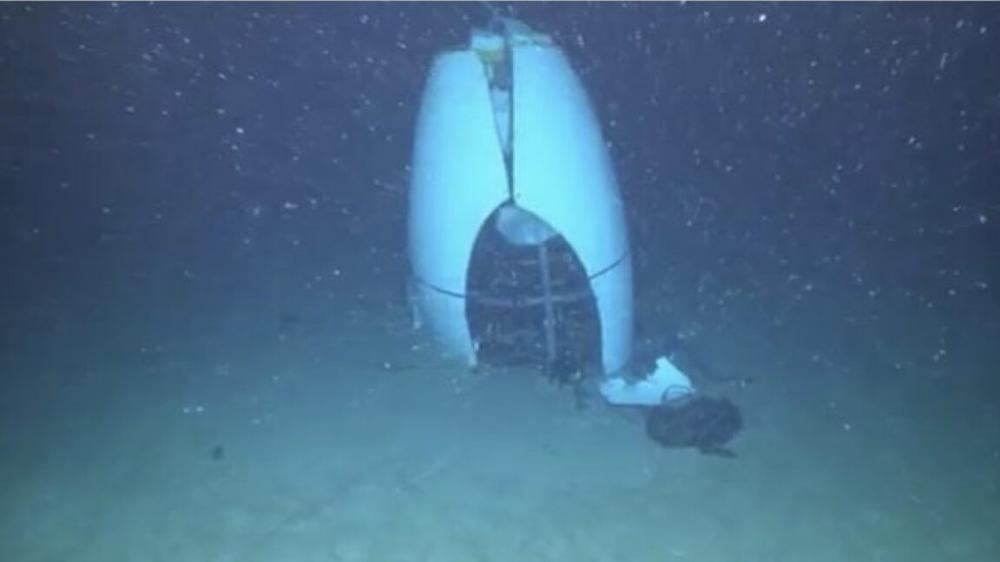In a 300-plus page final report released today, the US Coast Guard analyzed the 2023 Titan sub implosion from every conceivable angle and came to a clear conclusion: OceanGate CEO Stockton Rush was a dangerous and deeply unpleasant boss.
His company used "intimidation tactics" to sidestep regulatory scrutiny, it was a "toxic" workplace, and its safety culture was "critically flawed." The Titan itself was "undocumented, unregistered, non-certificated, [and] unclassed." As for Rush, he managed to "completely ignore vital inspections, data analyses, and preventative maintenance procedures." The result was a "catastrophic event" that occurred when 4,930 pounds per square inch of water pressure cracked the sub open and crushed its five occupants during a dive to the Titanic wreckage site.
Had Rush somehow survived, the report says, he would have been referred for prosecution.
Throwing the controller
One small story about a video game controller shows what Rush was like to work for. You may remember Rush from an infamous 2022 CBS Sunday Morning segment, where Rush showed journalist David Pogue around the Titan sub. "We run the whole thing with this game controller," Rush said, holding up a Logitech F710 controller with 3D-printed thumbstick extensions. Pogue chuckled, saying, "Come on!" as he covered his face with his hand.
The game controller had been used in OceanGate subs for years by that point; a 2014 video showed one being used to control the company's earlier Cyclops I submersible. In 2016, OceanGate took the Cyclops I to dive the wreck of the Andrea Doria outside of Nantucket, Massachusetts. (Seinfeld fans will remember that an entire episode is taken up with George's quest to get an apartment that was about to go to an Andrea Doria survivor.)
The OceanGate team spent two days at the site, running 2D and 3D scans of the sunken ship, until Rush got the Cyclops I "stuck under the bow of the Andrea Doria wreckage"—and he couldn't get the sub free. According to the report, Rush then "experienced a 'meltdown' and refused to let [the assistant pilot] assist in resolving the situation. When a mission specialist suggested that Mr. Rush hand over the controller to the assistant pilot, the assistant pilot reported that the controller was thrown at him. Upon obtaining the controller, the assistant pilot was able to free the Cyclops I from the wreckage."
Rush's subs got tangled with the wrecks they were visiting on more than one occasion. In 2022, one year before the fatal accident, the Titan completed a successful dive to the Titanic, but it was not without incident. The Titan was piloted "by the Titanic content expert who was not an employee of OceanGate nor a qualified pilot." When the sub reached the ocean floor, it moved closer to the wreckage and got one of its skids physically entangled in the Titanic. It was able to get free, but the report notes "OceanGate’s lack of a risk mitigation plan for an entanglement at depth, which was highlighted by the absence of a standby ROV or secondary submersible to assist in freeing the Titan from entanglement had the situation been more serious."
Rush also had a habit of riding roughshod over criticism or concerns. For instance, during a 2021 dive to the Titanic, "several critical equipment failures occurred, including a malfunction with the drop weight motors, which required the jettisoning of the drop weight tray to begin ascent." But Rush didn't want to drop the entire tray because it might disrupt future missions, since there "were no spare drop weight trays." Instead, Rush's plan was for the sub to "descend back to the ocean floor and remain there for up to 24 hours until the Titan's sacrificial anodes deteriorated and released the emergency weights."
Although this call was supposed to be made by the mission director, Rush made the decision himself. His "refusal to adhere to the Mission Director’s orders placed the Titan crew in a hazardous situation at an extreme ocean depth of approximately 3,800 m," the report says. (In the end, the sub was able to drop some of the weight without losing the entire tray mechanism, and it ascended safely, but the incident showed "a dangerous disregard for the Mission Director’s authority and a willingness to operate Titan at depth with multiple equipment malfunctions.")
Rush simply had little patience for safety; he fired those who tried to delay his project based on safety concerns, and if an idea was fast and easy, he was often willing to try it. Rush at one point told crew to use only four bolts to attach the Titan's 3,500-pound dome to the sub when it was above water, despite the fact that it was made to use 18. He did this because "it took less time." His director of engineering told him that this was a concern but was ignored. In 2021, when the Titan was being hoisted onto the deck of a ship, these bolts all sheared off, and the huge dome crashed down onto the sub's ocean launch platform.
Death in darkness
There's much more of this kind of thing in the report—including the time that the Titan's thruster controls were "inadvertently reversed" and the whole mission had to be steered "backwards"—but even the long list of safety problems in the report "represent only a fraction of the incidents that occurred during Titan’s expeditions."
Rush was under financial pressure, which appears to explain some of these decisions and may have ultimately led to his death. OceanGate decided to save money, for example, by storing the Titan sub outdoors over the Canadian winter, "exposing the hull to extreme temperature fluctuations [that] compromised the Titan’s hull integrity."
In the end, the hull failed. The resulting implosion was "catastrophic" and death was "immediate." It took two seconds for the sound of the explosion to ascend through the water column. At that point, the "Titan Communications and Tracking Team on the Polar Prince [ship] heard a 'bang' emanating from the ocean’s surface, which the investigation later correlated to the Titan's implosion. After that, all communications and tracking with the Titan were lost."

 Clay confirms it closed $100M round at $3.1B valuation
Clay confirms it closed $100M round at $3.1B valuation